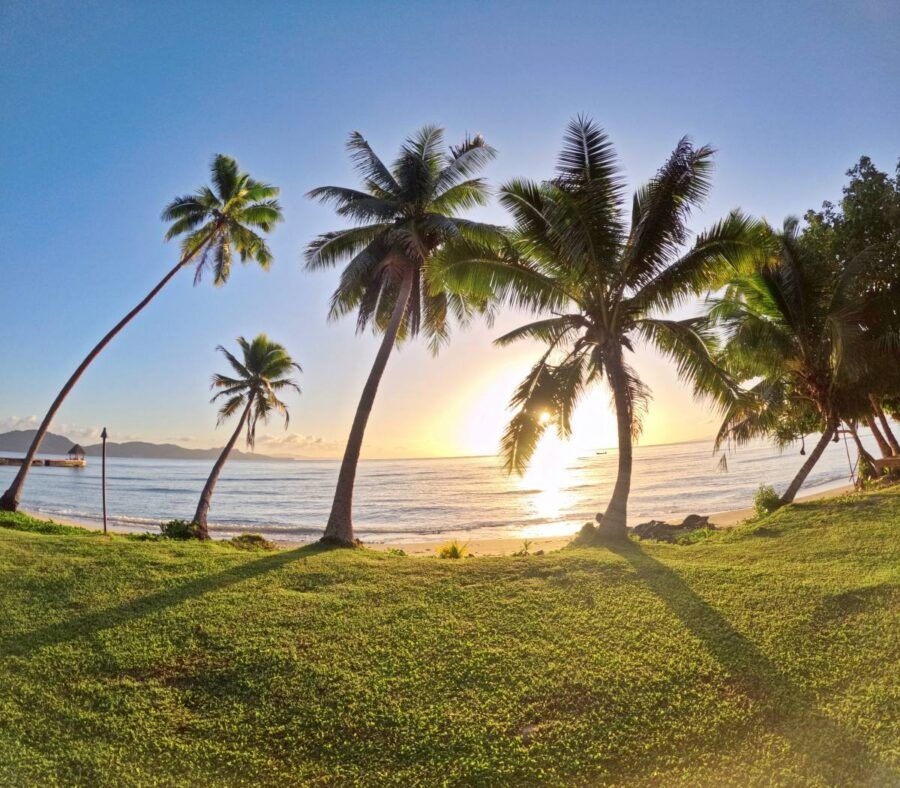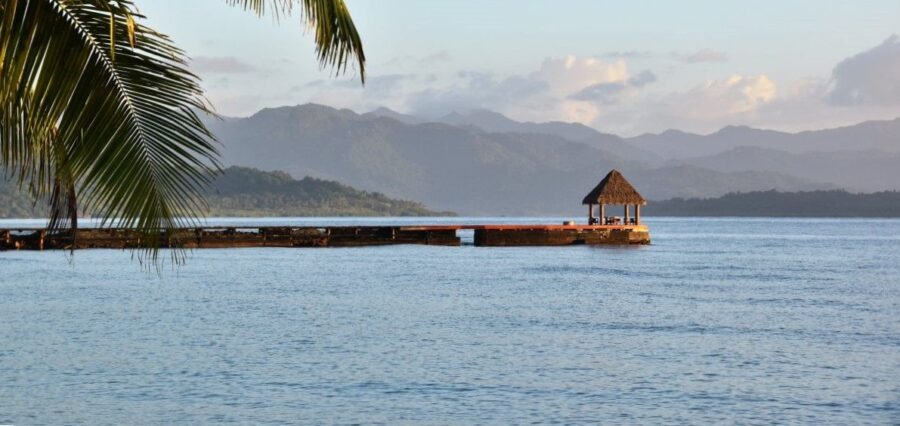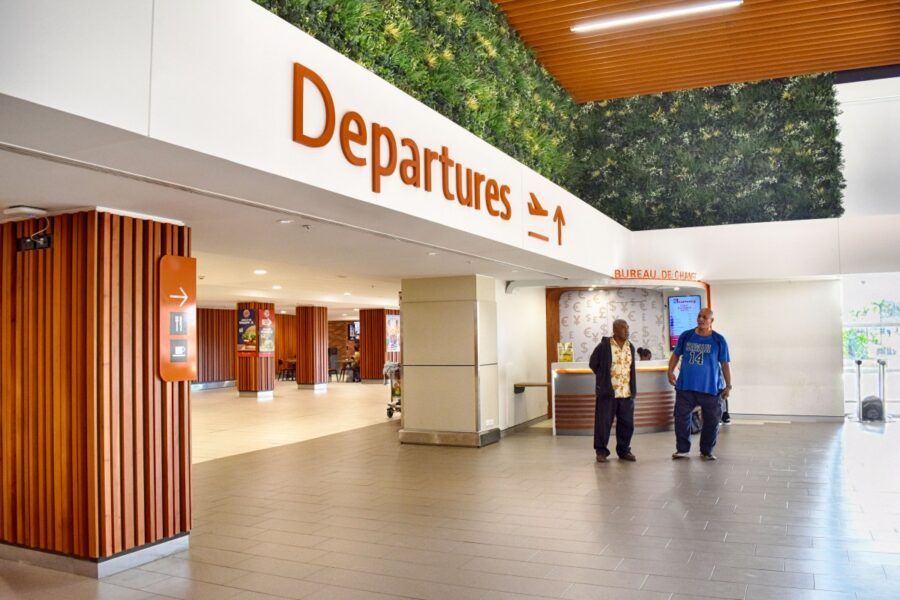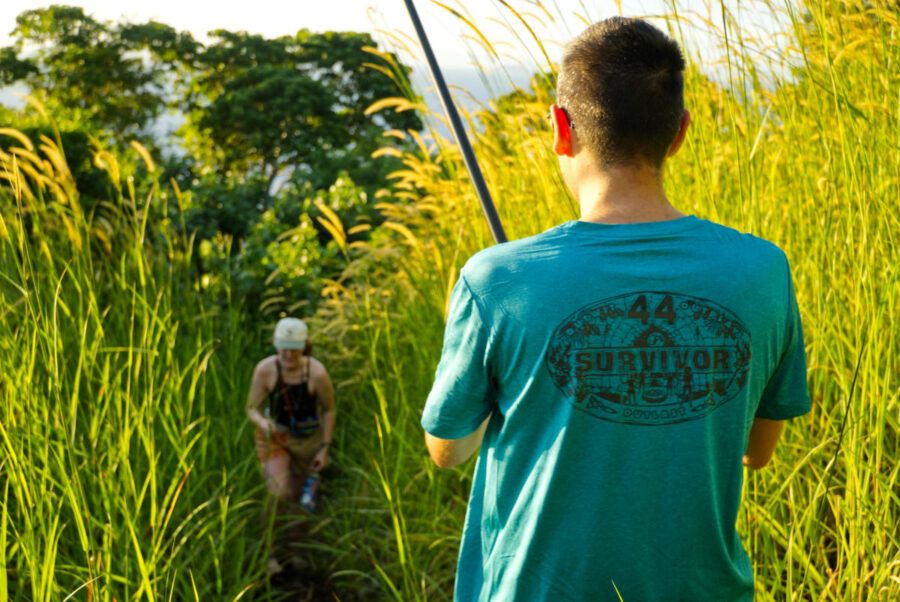How to Plan the Ultimate Luxury Holiday to Fiji
Leave all your worries at home; you’re on Fiji time now… Fiji is a place where everything slows down and where you’ll have the time to take it all in, whether it’s the breathtaking smorgasbord of landscapes or the warm friendliness of the locals (and the weather).
If you were wondering what the dream island getaway looks like, well… Fiji is an archipelago of 333 islands, so start planning your special getaway to the islands along with its diverse affair of destinations with this luxury travel guide to Fiji.
Table of Contents
An Introduction to Fiji
Location: Fiji is in the South Pacific in the continent of Oceania. Fiji sits in the centre of Tonga, Wallis and Futuna, Vanuatu and New Caledonia and is about two-thirds of the way between Hawaii and New Zealand.
Size: Fiji’s land area is 18,274 km2 (7,056 mi2) scattered across 1.3 million km² (501,930 mi²) of ocean.
Climate: Daily average temperature –25.5°C (77.9°F), average rainfall 1,826 mm (71.9 in) – 3,065 mm (120.7 in).
Time zone: FJT / GMT+12.
Population: 885,000.
Languages: English, Fijian and Fiji-Hindi.
![The Complete Luxury Travel Guide to Fiji 💎 [2025]](https://fijipocketguide.com/wp-content/uploads/2022/01/Qantas-Airline-Plane-CREDIT-Fiji-Pocket-Guide--1024x684.jpg) © FijiPocketGuide.com
© FijiPocketGuide.comHow to Get to Fiji
What is the best way to get to Fiji? Fiji can be accessed by flight, cruise ship or private sailing yachts. The most popular way to get to Fiji is by international flight, so let’s start with that.
Flying to Fiji
Direct international flights come from Australia, New Zealand, Hawaii, Vanuatu, New Caledonia, Nauru, Samoa, the Solomon Islands, Tonga, Kiribati, Tuvalu, Wallis & Futuna, the US, Canada, Japan, Hong Kong and Singapore.
If you are coming from further afield, then you will need to make a connecting flight most likely in Australia, New Zealand, or the US. See Which Airlines Fly Directly to Fiji? for more information.
Although Fiji has two international airports, around 97% of visitors to Fiji come via Nadi International Airport on the island of Viti Levu (Fiji’s main island). Learn more in our guide, Which Airport to Arrive in Fiji.
Cruises to Fiji
Fiji is on the itinerary of several South Pacific cruises from Australia, New Zealand and French Polynesia. There are five ports of call in Fiji, the main ones being Suva, Lautoka and Port Denarau. Cruises occasionally stop at Dravuni Island and Savusavu.
Find out which cruise companies have Fiji on their itinerary in the 10 Best Cruises That Visit Fiji, as well as what to do at each port of call in The Guide to Taking a Cruise to Fiji.
Sailing to Fiji
Fiji is conveniently located at the centre of the Transpacific journey between the US and New Zealand. The yachting season is between May and October. Learn about the sailing formalities and the ports of entry in The Sailing Guide to Fiji.
A Note on Customs Declarations
Fiji has strict biosecurity measures at the border to stop unwanted pests and diseases from entering the country. Therefore, anyone arriving in Fiji has to declare any “risk items” they have packed in their luggage – even common items like food and sports gear.
Be sure to read up on Everything You Need to Know About Arriving in Fiji so you are prepared.
Check out our complete guide on How to Get to Fiji for even more tips on making your way to the islands of Fiji.
![The Complete Luxury Travel Guide to Fiji 💎 [2025]](https://fijipocketguide.com/wp-content/uploads/2022/01/Vanua-Levu-Taveuni-Sunset-1-CREDIT-Fiji-Pocket-Guide--683x1024.jpg) © FijiPocketGuide.com
© FijiPocketGuide.comWhen to Visit Fiji
Fiji is a tropical country and experiences warm temperatures throughout the year. It has two distinct seasons: a dry season, which is drier and cooler, and a wet season, which is hotter and humid. Learn more about the climate in What is the Weather Like in Fiji?
Dry Season (May to November)
The dry season is also known as the winter season in Fiji, although many would not describe it as winter, with temperatures around 19-29 °C (66-84°F).
The rainfall per month is an average of 70-150 mm (2.8-6 in). The dry season is also the time for swimming with manta rays, surfing big waves, clearer scuba diving conditions and catching sailfish, skipjack tuna and wahoo.
Wet Season (December to April)
The wet season is hotter and more humid, with temperatures around 22-33°C (72-91°F) and an average monthly rainfall of 180-310 mm (7.1-12.2 in).
This is also Fiji’s cyclone season, which means there’s a risk of cyclones (but only a risk, which you can learn more about in How to Prepare for a Cyclone in Fiji). The wet season is also the best time to catch marlin, yellowfin tuna, and mahimahi, as well as avoid other tourists.
The Best Time to Take an Adults-Only Trip to Fiji
An obvious go-to for an adults-only trip to Fiji is anywhere outside of the Australian and New Zealand school holidays, where the islands, particularly Viti Levu and the Mamanuca Islands, get hectic with families.
In other words, avoid the second half of April, especially July, the first half of October and the end of December through January.
Still can’t decide when the best time is to travel to Fiji? Check out our complete guide, The Best Time to Visit Fiji, which dives much deeper into the subject.
![The Complete Luxury Travel Guide to Fiji 💎 [2025]](https://fijipocketguide.com/wp-content/uploads/2022/01/Packing-Bikini-Swimwear-Clothes-Suitcase-MUST-CREDIT-LINK-CookIslandsPocketGuide.com_-1024x684.jpg) © FijiPocketGuide.com
© FijiPocketGuide.comWhat to Pack for Fiji
The main thing you need to keep in mind when packing for Fiji is having a tropical wardrobe that includes some more modest items of clothing for visiting Fijian villages. A packing list for Fiji might look a little something like this:
| 👗 Fiji Casual Clothing | |
| ⬜ | 4 Singlets/T-Shirts |
| ⬜ | 2 Blouses/Shirts to cover the shoulders for visiting villages and sun protection |
| ⬜ | 2 Shorts/Skirts |
| ⬜ | 1 Light evening dress to impress at dinner |
| ⬜ | 1 Dress/Skirt below the knee for town or village visits (light fabrics recommended, such as bamboo dresses by Moso Morrow) |
| ⬜ | 1 Sarong (Sulu) for the beach and swimwear cover-up |
| ⬜ | 1 or 2 Light sleepwear if you’re against sleeping in your undies |
| ⬜ | 1 Light Cardigan/Pashmina/Poncho for cooler evenings |
| ⬜ | 1 Sports shorts/Leggings for active activities |
| ⬜ | 1 Sports T-shirt/Singlet for active activities |
| ⬜ | 1 Warm fleece if you plan to do mountain hikes |
| ⬜ | 1 Outfit to travel between Fiji and home |
| ⬜ | 3 Bras (strapless, sports, and comfortable bras) |
| ⬜ | 6 Underwear |
| ⬜ | 4 Socks |
| 👙 Fiji Swimwear | |
| ⬜ | 1 Bikini for resort beach/pool |
| ⬜ | 1 One-piece for watersports/village stays |
| ⬜ | 2 Boardshorts for guys |
| ⬜ | 1 Rash vest (we like sustainable Sharkskin rashies) |
| 👒 Fiji Sun, Rain, and Insect Protection | |
| ⬜ | Sunhat |
| ⬜ | Sunglasses |
| ⬜ | Light shirt to cover arms and back |
| ⬜ | Light rain jacket/small umbrella |
| 👟 Fiji Footwear | |
| ⬜ | Flip-flops/sandals |
| ⬜ | Walking shoes/sandals |
| ⬜ | Reef shoes/water shoes |
And that’s just clothes! For a full packing list of everything to take, including accessories and toiletries, check out The Complete Packing List for Fiji.
Health Products
With high UV levels and the presence of mosquitos, certain health products are essential to take to Fiji. Fiji also has a fragile marine ecosystem, so reef-safe sunscreens and repellents are a must. If going to the outer islands, a reusable water purification bottle is preferable to buying bottled water for obvious environmental reasons.
See our health essentials packing list in What Medication to Pack in Your First Aid Kit for Fiji.
Fiji Currency
The currency in Fiji is Fijian Dollars. While credit/debit cards are accepted in major resorts and businesses in Fiji’s towns, you should have cash available for taxis and visiting villages.
Get more money tips in What is the Best Way to Pay in Fiji?
Travel Documents and Paperwork
Visitors from around 100+ countries do not need a visa to visit Fiji but do need a passport that is valid for no less than six months after your intended date of departure – see visa-exempt countries in our Fiji Tourist Visa Guide.
There may be other current entry requirements, which we keep updated in What Documents Do I Need to Travel to Fiji? More info can also be found on the Fiji Tourism Travel Advisory page.
![The Complete Luxury Travel Guide to Fiji 💎 [2025]](https://fijipocketguide.com/wp-content/uploads/2022/01/Private-Plunge-Pool-Luxury-4-CREDIT-Fiji-Pocket-Guide--683x1024.jpg) © FijiPocketGuide.com
© FijiPocketGuide.comHow Long Should You Spend in Fiji
Admittedly, Fiji makes an idyllic getaway for just staying in the same resort for a few days to a week – and that’s fine; we all need some R&R from time to time. More intrepid travellers, however, will find that Fiji is an excellent country not only for island-hopping but road tripping around Viti Levu.
We’d recommend the minimum number of days to spend in Fiji is five days if just visiting Viti Levu, the Mamanuca Islands or the Yasawa Islands.
However, 10 to 14+ days is the recommended number of days for a satisfying trip to Fiji, especially if you include some island-hopping, such as visiting Vanua Levu and Taveuni.
For those of you who want to explore, here’s what you can achieve in certain timeframes… (And don’t worry, we’ll get onto the destinations in the next few sections).
3 Days / A Long Weekend in Fiji
Over a long weekend, you will have enough time to explore Nadi, Denarau and the Coral Coast or perhaps take a quick trip to the Mamanuca and Yasawa Islands. See an example itinerary in the Fiji Luxury Itinerary: 3 Days.
5 Days in Fiji
Five days is enough time for a quick island-hopping itinerary in the Mamanuca and Yasawa Islands or check out Fiji’s landscape of resorts and adventure activities along the Coral Coast and Pacific Harbour. Alternatively, take a charter flight to and between Vanua Levu and Taveuni.
Check out our Fiji Luxury Itinerary: 5 Days for inspiration.
7 Days / 1 Week in Fiji
A week in Fiji gives you time to relax in any one of the island groups, but for those who want to move around, you could take a road trip around Viti Levu or do some island-hopping in the Mamanuca and Yasawa Islands.
Alternatively, you could explore between the two less-visited islands, Vanua Levu and Taveuni.
See Fiji Luxury Itinerary: 7 Days (Sand & Sea) or Fiji Luxury Itinerary: 7 Days (Culture & Nature) for trip ideas.
14 Days / 2 Weeks in Fiji
14 days allows you to extend itineraries suggested for a week. It will also give you time to explore a mix of Viti Levu and the Mamanuca/Yasawa Islands or Viti Levu, Vanua Levu and Taveuni, or a week in Kadavu and a week in Viti Levu…
Check out more suggestions in Fiji Luxury Itinerary: 14 Days.
How Long Can You Stay in Fiji?
Visitors to Fiji can stay up to four months! Visitor extensions are available, however, which you can learn more about in our guide, How Long Can You Stay in Fiji on a Visitor Visa?
![The Complete Luxury Travel Guide to Fiji 💎 [2025]](https://fijipocketguide.com/wp-content/uploads/2022/01/Viti-Levu-aerial-scenic-flight-hills-mountains-Unsplash-1024x768.jpg) © FijiPocketGuide.com
© FijiPocketGuide.comWhere to Visit: Viti Levu
If you’re looking for a fly-and-flop getaway, most find Fiji’s main island more than satisfactory. Viti Levu is Fiji’s largest island with several breathtaking destinations within one landmass. Viti Levu is a top choice for luxury travellers who are on a limited time or perhaps looking for more than just beaches.
Nadi, Denarau and the Coral Coast
You don’t need to travel far from Nadi International Airport before arriving in paradise. Nadi, Denarau and the Coral Coast are the closest regions to the airport, ensuring that you transition into “Fiji time” quickly. Nadi is home to a charming selection of luxury resorts that offer a lavish experience.
Wherever you decide to spend your R&R time, you’ll also have the option to enjoy some exclusive tours, from helicopter flights to heavenly spa treatments.
Go to The Luxury Guide to Nadi for more information.
While Nadi is great, most seeking a luxury holiday close to the airport set their sights on Denarau, a manmade island exclusively home to five-star resorts, luxury apartments and private residences. Find out more in The Luxury Guide to Denarau Island.
For those desperate for golden-sand beaches tucked between lush palms and vibrant coral reefs, head to the Coral Coast. Stretching along the southern coast of Viti Levu, the Coral Coast is blessed with some exclusive five-star resorts offering a holiday that dreams are made of.
Discover the Coral Coast further in The Luxury Guide to the Coral Coast.
Pacific Harbour, Suva and the Suncoast
Viti Levu’s Pacific Harbour, Suva and the Suncoast might be a little further from the airport, but those seeking adventure or want to get a little off the beaten track will be served here. The Pacific Harbour and Beqa Island offer outstanding scuba diving and river tours, alongside exquisite fine dining and truly relaxing day spas.
Find out more in The Luxury Guide to Pacific Harbour & Beqa.
About 40 minutes drive from the Pacific Harbour is Fiji’s capital, Suva. Jam-packed with culture and city charm, Suva has few but exclusive luxury accommodations, dining and activities to experience. Learn more in The Luxury Guide to Suva.
One of the best luxuries of the Suncoast is that not many people know about it yet. This northern side of Viti Levu provides a tranquil retreat on the sunniest side of the island. The Suncoast hides a wealth of luxury experiences, from having authentic cuisine prepared in your own private villa to staying on a private island.
Find out more in The Luxury Guide to the Suncoast.
 © FijiPocketGuide.com
© FijiPocketGuide.comWhere to Visit: Mamanuca and Yasawa Islands
A mix of sandy coral atolls and rugged volcanic islands make up the Mamanuca and Yasawa Islands. Quick to get to, especially with a helicopter or seaplane charter, these island groups ensure a true island experience just a short flight from Nadi Airport or Denarau.
Mamanuca Islands
The Mamanuca Islands are some of Fiji’s most prestigious islands, holding luxury resorts for the ultimate escape to paradise.
With fine dining, stylish retreats in your private bure (bungalow), deluxe spas and an array of spectacular water and land activities, there’s enough to do as much or as little as you like on a luxury holiday in the Mamanuca Islands.
Find out more about staying here in The Luxury Guide to the Mamanuca Islands.
Yasawa Islands
The Yasawa Islands are a true South Pacific paradise with soft sandy beaches, crystal-clear waters, and lush tropical forests. This stunning archipelago offers a unique seasonal experience.
Only three five-star resorts grace these islands, each offering unforgettable experiences that connect you with local culture, nature, and each other. Discover more about these luxurious hideaways in our The Luxury Guide to the Yasawa Islands.
Be sure to check out The Best Islands to Visit in Fiji for more of a comparison.
When to Visit the Yasawa Islands
Experience the essence of luxury in the Yasawa Islands year-round. From May to October, the dry season, you’ll find a vibrant backpacker scene. During the wet season, a more mature clientele indulges in a tranquil atmosphere.
We personally love the islands’ ability to cater to diverse tastes, offering a perfect blend of adventure and relaxation in every season. (You’ll find the ideal time for your visit depends on your preferred ambience.)
![The Complete Luxury Travel Guide to Fiji 💎 [2025]](https://fijipocketguide.com/wp-content/uploads/2022/01/Rainbow-Reef-Landscape-Wananavu-Dive-Boat-CREDIT-Fiji-Pocket-Guide--1024x684.jpg) © FijiPocketGuide.com
© FijiPocketGuide.comWhere to Visit: Vanua Levu and Taveuni
Fiji’s northern islands are home to some of the most luxurious boutique resorts in the country, nestled in tropical jungles, tucked away in a secluded bay, or on their own private islands. Vanua Levu and Taveuni are just a one-hour flight from Nadi but feel a world away.
Vanua Levu
Fiji’s second-largest island is much less populated by locals and less visited by tourists, making for a special place to really escape from it all.
On top of that, the luxury resorts scattered across the island go above and beyond to help you appreciate why travelling a little longer to get to Vanua Levu is well worth it, whether it’s soaking in the serenity of a world-class spa or taking part in some of Fiji’s most unique experiences.
Plan your trip to the island in The Luxury Guide to Vanua Levu.
Taveuni
Taveuni is an island where luxury finds you. Whether you see luxury as having every need attended to in a five-star resort, whether it’s the exclusivity of a private island, or whether it’s in a place where much of the landscape and seascape remains unspoiled…
Taveuni and its surrounding islands of Qamea, Matangi and Laucala, hold some of Fiji’s most exclusive resorts.
Find out more in The Luxury Guide to Taveuni.
Be sure to check out The Best Islands to Visit in Fiji for more of a comparison.
![The Complete Luxury Travel Guide to Fiji 💎 [2025]](https://fijipocketguide.com/wp-content/uploads/2022/01/Vatuvara-Beach-Landscape-CREDIT-Fiji-Pocket-Guide--1024x684.jpg) © FijiPocketGuide.com
© FijiPocketGuide.comWhere to Visit: Kadavu, Lomaiviti and Lau Islands
Finally, for those travellers seeking the most remote, exclusive and less developed island getaways, the island groups of Kadavu, the Lomaiviti Islands and the Lau Islands are worth exploring.
Kadavu
Kadavu is one of those rare destinations in Fiji where the luxury accommodation options are limited, with most resorts providing a more “rustic” accommodation experience.
That’s with the one exception of Kokomo Private Island, which makes for a fabulous base for scuba diving in the Great Astrolabe Reef, boating to hidden waterfalls, snorkelling with Manta Rays and much more.
Find out more in The Complete Guide to Kadavu.
Lomaiviti Islands
Private island resorts dot the azure waters of the Lomaiviti Islands, only a 10-minute flight from Suva. The islands are famous for their history, and one town, Levuka, is even listed as a UNESCO World Heritage Area.
Find out more in The Luxury Guide to the Lomaiviti Islands.
Lau Islands
The sixty islands that pepper the deep blue waters of Fiji’s eastern reaches make up the Lau Islands. This is Fiji’s least-visited island group and, in turn, the most pristine, with uninhabited islands, coral atolls, limestone caves and remote Fijian villages living a traditional way of life.
Find out how to get to these remote islands in The Luxury Guide to the Lau Islands.
Be sure to check out The Best Islands to Visit in Fiji for more of a comparison.
![The Complete Luxury Travel Guide to Fiji 💎 [2025]](https://fijipocketguide.com/wp-content/uploads/2022/01/Heli-Tours-Helicopter-10-CREDIT-Fiji-Pocket-Guide--1024x684.jpg) © FijiPocketGuide.com
© FijiPocketGuide.comHow to Get Around Fiji
Yes, after seeing the number of island groups in Fiji, let alone the different islands and some of the larger islands to explore, you’re probably wondering: how do I get around all of these islands?
The answer is pretty simple if you have a little luxury in mind. More touristic islands, such as the Mamanucas and Yasawas, are well-serviced by helicopter charters, seaplanes and water taxis, while resorts on the lesser-visited islands often organise transport for you. The main ways to get around Fiji on a luxury holiday include:
Domestic Flights
There are two scheduled domestic carriers in Fiji, both offering regular flights between Fiji’s most populated islands.
Learn more about these flights in The Complete Guide to Flights in Fiji.
Charter Flights
Charter flights via fixed-wing, seaplane and helicopter aircraft are available in Fiji to take passengers between Fiji’s island groups, particularly Viti Levu and the Mamanucas, Yasawas, Vanua Levu, Taveuni and Kadavu.
Find out more in our guide, Where to Hire a Plane or Seaplane in Fiji and Where to Hire a Helicopter in Fiji.
Water Taxis
Water taxis provide transport and resort transfers on demand between Denarau, the Mamanuca Islands, and the Yasawa Islands.
Find out more about this convenient way to get around Fiji in our guide, How to Catch a Water Taxi in Fiji.
Car Rentals
Rental cars are available in Viti Levu, Vanua Levu and Taveuni. Learn more about hiring a car in The Guide to Renting a Car in Fiji.
Resort Transfers
Before organising your own transport, be sure to check whether your chosen luxury resort doesn’t provide it all for you.
Many luxury accommodations offer land and/or water transport from the nearest airport, which you can learn more about in All Fiji Airport Transfer Options: Buses, Helicopters & More.
There are a lot more ways to travel around Fiji, so be sure to browse our Fiji Transport Guide: 20 Best Ways to Get Around Fiji for more advice.
![The Complete Luxury Travel Guide to Fiji 💎 [2025]](https://fijipocketguide.com/wp-content/uploads/2022/01/Tavola-Villa-Luxury-13-CREDIT-Fiji-Pocket-Guide--683x1024.jpg) © FijiPocketGuide.com
© FijiPocketGuide.comWhere to Stay: Luxury Accommodation in Fiji
When it comes to luxury resorts, Fiji is a world leader. In most cases, resorts handle everything: accommodation, entertainment, tours and sometimes even transport. For these reasons, one of the most important decisions you can make for a luxury trip to Fiji is your choice of accommodation.
That’s not to say that Fiji solely has resorts. If that’s not your style, then you have boutique lodges, hotels, homestays, holiday homes, villas and even small-ship cruises to choose from.
Luxury Resorts
The most abundant accommodation type in Fiji, resorts are typically complexes with hotel-style rooms or freestanding bure (bungalows) and facilities such as a restaurant and swimming pool.
Many resorts across Fiji, especially on remote islands, offer an entertainment schedule, as well as optional paid tours, such as scuba diving, fishing, massages and more.
Note that there are also adults-only resorts in Fiji, as well as family-friendly resorts with kids’ clubs.
Dive deeper into what a resort entails in How to Pick the Best Resort in Fiji for You. Plus, don’t miss the 20 Best Luxury Resorts in Fiji.
What is the Most Luxurious Resort in Fiji?
From remote private islands only accessible by seaplane like Kokomo Private Island to the resort where celebrities stay in Fiji, COMO Laucala Island Resort, the most luxurious resort in Fiji depends on what you call “luxury” (but the two mentioned are undoubtedly top contenders).
See our top picks in the 20 Best Luxury Resorts in Fiji.
Does Fiji Have Overwater Bungalows?
Yes, Fiji has an exclusive selection of overwater bungalows, locally known as overwater bures (the Fijian word for “bungalow”). Compare them all in the 5 Best Overwater Bungalows in Fiji.
Luxury Holiday Homes and Villas
For a more intimate style of accommodation in Fiji, choose a luxury holiday home or villa. While villas and holiday homes are just about the only type of self-catering accommodation available in Fiji, many of the luxury options still provide the services of a resort down to the activities and dining.
Learn more about what holiday homes are like in How to Pick the Best Holiday Home in Fiji for You and villas in How to Pick the Best Villa in Fiji for You.
Plus, find the ideal stay in the 20 Best Holiday Homes in Fiji and the 10 Luxury Villas in Fiji with a Pool.
Small-Ship Cruises
Fiji has small-ship cruises sailing primarily to the Mamanuca and Yasawa Islands. They offer cabin accommodation along with the opportunity to visit different islands, free and optional paid activities, and meals.
Learn more about these cruises in The Guide to Cruises Around Fiji.
What is the Most Expensive Hotel in Fiji?
With rates starting from FJ$12,000 a night, COMO Laucala Island Resort is the most expensive hotel (resort) in Fiji.
![The Complete Luxury Travel Guide to Fiji 💎 [2025]](https://fijipocketguide.com/wp-content/uploads/2022/01/Sabre-Sandbank-Couple-Cocktails-Luxury-CREDIT-Fiji-Pocket-Guide-1-1-1024x684.jpg) © FijiPocketGuide.com
© FijiPocketGuide.comLuxury Experiences in Fiji
Contrary to popular belief, there’s more to do in Fiji than drink cocktails and sit by the pool. Fiji exceeds at adventure, relaxation and culture.
There’s so much to do that we could hardly fit it all into our 101 Things to Do in Fiji: The Ultimate List.
When it comes to experiences that add a special touch to your Fiji getaway, you can grace your itinerary with the following:
- Arrive at your resort in style by helicopter or seaplane
- Scuba dive at world-famous dive sites, such as Rainbow Reef and the Namena Marine Reserve in Vanua Levu
- Enjoy a day’s fishing, game fishing or island-style, in the Yasawa Islands
- Travelling with kids? Treat them (and yourselves) to a day at the kids’ club
- Escape to an adults-only luxury resort
- Enjoy spa treatments amid the jungle in Taveuni
- Indulge in fine dining at five-star resorts and hotels
- Retreat to a secluded beach or sand cay for a private picnic
- Play golf at a championship course in Denarau or the Coral Coast
- Sail in a luxury yacht around the islands.
For more information on each experience, check out the 10 Most Luxurious Experiences in Fiji.
More Activities in Fiji
While not necessarily falling under the “luxury” category, discerning travellers might also like to add some of Fiji’s highlight experiences to their bucket list:
- Snorkelling – Discover colourful underwater worlds in crystal-clear waters
- Swimming with sharks or manta rays – Encounter majestic marine creatures up close
- Fijian village visits – Experience authentic local culture and traditions
- Fijian cultural dancing (meke) – Witness captivating traditional performances
- Fijian crafting lessons – Learn ancient skills from local artisans
- Cooking classes – Master the art of preparing delicious Fijian cuisine
- Kayaking – Paddle through pristine lagoons and mangrove forests
- Stand-up paddleboarding – Glide across calm waters with stunning island views
- Parasailing – Soar high above turquoise seas for breathtaking vistas
- Walking/hiking – Explore lush rainforests and scenic coastal trails
- Surfing – Ride world-class waves in tropical paradise settings
- Jet boat tours – Experience thrilling rides through scenic river gorges
- White water rafting – Navigate exhilarating rapids in pristine landscapes
- Skydiving – Freefall over Fiji’s stunning archipelago
- Quad biking/off-roading – Adventure through rugged terrain and lush forests
- Sightseeing tours – Discover Fiji’s natural wonders and cultural highlights
Again, you’ll find much more inspiration from our 101 Things to Do in Fiji: The Ultimate List so get on there!
![The Complete Luxury Travel Guide to Fiji 💎 [2025]](https://fijipocketguide.com/wp-content/uploads/2022/01/Champagne-Sparkling-Paradise-Drink-Luxury-CREDIT-Fiji-Pocket-Guide--683x1024.jpg) © FijiPocketGuide.com
© FijiPocketGuide.comFood and Dining in Fiji
From the menus of the restaurants in Fiji’s major towns to the resort restaurants, a wide range of international cuisine is represented in Fiji.
Fijian foods are also easy enough to come by, especially on resort menus, while Indo-Fijian cuisine is best sampled at town curry houses. If you find yourself on a less developed island, your resort or homestay host provides meals, typically through meal plans.
Everything you need to know about food in Fiji can be found in The Food Guide to Fiji: Places to Eat & Food Tours.
Restaurants and Cafes
Restaurants and cafes come with plenty of choices in Fiji’s most-visited hubs, like Nadi, Denarau, Suva and Savusavu, serving up international favourites, including Asian, European, American and Fijian (mostly kokoda) dishes.
Outside these hubs, restaurants can almost only be found at resorts, while smaller towns may have the odd Asian takeaway or street food at markets.
Check out the food guide to each of Fiji’s regions in The Food Guide to Fiji: Places to Eat & Food Tours.
Resort Restaurants
While resorts on Viti Levu tend to have à la carte menus or optional meal plans with a wide range of food choices, resorts in more remote areas or less-developed islands typically have fewer options and make the most of scarcer resources.
These resorts tend to offer daily set menus, where you’ll need to order your meals a few hours in advance. Many resorts pride themselves on showcasing fresh, locally sourced ingredients, often incorporating traditional Fijian flavours into their dishes.
You can expect to find plenty of seafood options, tropical fruits, and international cuisines with a Fijian twist. Some resorts even offer romantic private dining experiences on the beach – perfect for those special occasions!
Meal plans are further explained in our guide, Is it Worth Buying a Resort Meal Plan in Fiji?
Self-Catering
Self-catering is relatively easy on Fiji’s most developed islands, Viti Levu, Vanua Levu and Ovalau, with plenty of accommodations with cooking facilities, as well as supermarkets, convenience stores and roadside fruit stalls to pick up supplies.
Check out the A Guide to Supermarkets & Food Shopping in Fiji for everything you need to know about a self-catering holiday. Plus, check out The Cost of Food in Fiji for restaurant and grocery store prices.
Special Diets
Vegetarian options are widely available in Fiji. More specific diets, such as veganism and coeliacs, are harder to cater for. Check out our advice in Fiji for Vegans & Vegetarians, as well as The Gluten-Free Guide to Fiji.
Food and Water Safety
There are no major health concerns to be worried about when it comes to food in Fiji. Resort restaurants have a high standard. However, one should be a little wary when it comes to street food – it’s best to try food that is cooked and to avoid drinking tap water (or treat it) if you’re unsure of the quality.
See Is the Water Safe to Drink in Fiji? for more advice. Plus, check out Fiji Safety Tips for additional advice.
What Food to Try
And what are the foods worth trying in Fiji? Look out for the items listed in Traditional Fijian Food: 20 Foods to Try in Fiji and 10 Drinks in Fiji You Have to Try!
Fiji Luxury Accommodation
Viti Levu
- Fiji Marriott Resort Momi Bay
- Sapphire Bay Fiji
- DoubleTree by Hilton – Sonaisali
- Radisson Blu Resort Fiji
- The Westin Denarau Island Resort & Spa
- Sofitel Fiji Resort & Spa
- Sheraton Fiji Resort
- Sheraton Denarau Villas
- Hilton Fiji Beach Resort & Spa
- The Warwick Fiji
- Maui Palms
- InterContinental Fiji Golf Resort & Spa
- Outrigger Fiji Beach Resort
- Shangri-La’s Fijian Resort & Spa
- Nanuku Resort
- Royal Davui Island Resort
- The Pearl Resort
- Beqa Lagoon Resort
- Bularangi Villa
- Volivoli Beach Resort
- The Fiji Orchid
- Grand Pacific Hotel
- Tanoa Plaza Hotel
- Novotel Suva Lami Bay
Mamanuca and Yasawa Islands
- Tadrai Island Resort
- Six Senses Fiji
- Likuliku Lagoon Resort
- Tokoriki Island Resort
- VOMO Island Resort
- Sheraton Resort & Spa Tokoriki Island
- Yasawa Island Resort & Spa
- Navutu Stars Resort
Vanua Levu and Taveuni
- Emaho Sekawa Resort
- Namale Resort & Spa
- Savasi Island Resort
- Tavola Villa
- Koro Sun Resort
- Nukubati Great Sea Reef
- The Remote Resort
- Qamea Resort & Spa
- Taveuni Island Resort & Spa
- Taveuni Palms Resort
- Raiwasa Grand Villa
- Vacala Bay Resort
- Matangi Private Island Resort
- Tides Reach Resort
- COMO Laucala Island
Kadavu, Lomaiviti and Lau Islands
- Kokomo Private Island
- Wakaya Club & Spa
- Toberua Island Resort
- Vatuvara Private Islands
For more on our top picks, see the 30 Best Luxury Resorts in Fiji.
Plan More of Your Luxury Trip to Fiji
That’s it for our complete guide to luxury travel in Fiji. For more premium travel tips, check out the following articles:
- 30 Best Luxury Resorts in Fiji
- 15 Most Luxurious Experiences in Fiji
- The Complete Adults-Only Travel Guide to Fiji
And if you simply can’t get enough Fiji wisdom, head over to the 30 Tips for Travelling in Fiji.
Happy travels and thanks for checking out this luxury travel guide to Fiji!
Sources:
The information in this guide has been compiled from our extensive research, travel and experiences across Fiji and the South Pacific, accumulated over more than a decade of numerous visits to each destination. Additional sources for this guide include the following:
- Tourism Fiji (General travel advice - Updated [2025])
- Fiji Immigration (Visa and immigration advice - Updated [2025])
- Fiji Revenue & Customs Service (Customs and visitor taxes - Updated [2025])
- Biosecurity Authority of Fiji (Biosecurity advice - Updated [2025])
- Fiji Meteorological Service (Weather forecast and warnings - Updated [2025])
- Fiji Bureau of Statistics (Statistics and travel data - Updated [2025])
- Ministry of Tourism and Civil Aviation (Tourism statistics - Updated [2025])
- Land Transport Authority (Road safety advice - Updated [2025])
- Safe Travel (New Zealand travel advisory for Fiji - Updated [2025])
- Smart Traveller (Australia travel advisory for Fiji - Updated [2025])
- Travel.State.Gov (U.S. travel advisory for Fiji - Updated [2025])
- SPTO (Pacific tourism advice - Updated [2025])
- Fiji Hotel and Tourism Association (Tourism trade association - Updated [2025])
Our editorial standards: At Fiji Pocket Guide, we uphold strict editorial standards to ensure accurate and quality content.

About The Author
Laura (Lora) S.
This article was reviewed and published by Laura, editor in chief and co-founder of Fiji Pocket Guide. Since arriving solo in the South Pacific over 10 years ago with nothing but a backpack and a background in journalism, her mission has been to show the world how easy (and awesome) it is to explore a paradise such as Fiji. She knows the islands inside-out and loves sharing tips on how best to experience Fiji’s must-dos and hidden gems. Laura is also editor of several other South Pacific travel guides.
![The Complete Luxury Travel Guide to Fiji 💎 [2025]](https://fijipocketguide.com/wp-content/uploads/2022/01/Reef-Aerial-Pattern-Header-Kadavu-Landscape-6-CREDIT-Fiji-Pocket-Guide--867x650.jpg)
![The Complete Luxury Travel Guide to Fiji 💎 [2025] The Complete Luxury Travel Guide to Fiji 💎 [2025]](https://fijipocketguide.com/wp-content/uploads/2022/01/Reef-Aerial-Pattern-Header-Kadavu-Landscape-6-CREDIT-Fiji-Pocket-Guide-.jpg)




![The BEST Travel Guide to Fiji: How to Plan a Trip to Fiji 🌴 [2025]](https://fijipocketguide.com/wp-content/uploads/2022/01/Kioa-Landscape-Reef-Vanua-Pano-CREDIT-Fiji-Pocket-Guide--900x366.jpg)

![The Complete Travel Guide to Fiji on a Budget 🤑 [2025]](https://fijipocketguide.com/wp-content/uploads/2022/01/Kioa-Snorkel-Aerial-3-CREDIT-Fiji-Pocket-Guide--900x675.jpg)


